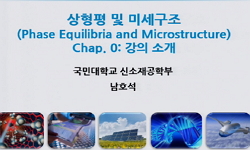Background and Purpose There is accumulating evidence that epilepsy is caused by network dysfunction. We evaluated the hub reorganization of subcortical structures in patients with focal epilepsy using graph theoretical analysis based on diffusion-ten...
http://chineseinput.net/에서 pinyin(병음)방식으로 중국어를 변환할 수 있습니다.
변환된 중국어를 복사하여 사용하시면 됩니다.
- 中文 을 입력하시려면 zhongwen을 입력하시고 space를누르시면됩니다.
- 北京 을 입력하시려면 beijing을 입력하시고 space를 누르시면 됩니다.



Pivotal Role of Subcortical Structures as a Network Hub in Focal Epilepsy: Evidence from Graph Theoretical Analysis Based on Diffusion-Tensor Imaging
한글로보기https://www.riss.kr/link?id=A105976508
- 저자
- 발행기관
- 학술지명
- 권호사항
-
발행연도
2019
-
작성언어
English
- 주제어
-
등재정보
KCI등재,SCIE,SCOPUS
-
자료형태
학술저널
-
수록면
68-76(9쪽)
-
KCI 피인용횟수
6
- DOI식별코드
- 제공처
-
0
상세조회 -
0
다운로드
부가정보
다국어 초록 (Multilingual Abstract)
Background and Purpose There is accumulating evidence that epilepsy is caused by network dysfunction. We evaluated the hub reorganization of subcortical structures in patients with focal epilepsy using graph theoretical analysis based on diffusion-tensor imaging (DTI).
In addition, we investigated differences in the values of diffusion tensors and scalars, fractional anisotropy (FA), and mean diffusivity (MD) of subcortical structures between patients with focal epilepsy and healthy subjects.
Methods One hundred patients with focal epilepsy and normal magnetic resonance imaging (MRI) findings and 80 age- and sex-matched healthy subjects were recruited prospectively.
All subjects underwent DTI to obtain data suitable for graph theoretical analysis. We investigated the differences in the node strength, cluster coefficient, eigenvector centrality, page-rank centrality measures, FA, and MD of subcortical structures between patients with epilepsy and healthy subjects.
Results After performing multiple corrections, the cluster coefficient and the eigenvector centrality of the globus pallidus were higher in patients with epilepsy than in healthy subjects (p=0.006 and p=0.008, respectively). In addition, the strength and the page-rank centrality of the globus pallidus tended to be higher in patients with epilepsy than in healthy subjects (p= 0.092 and p=0.032, respectively). The cluster coefficient of the putamen was lower in patients with epilepsy than in healthy subjects (p=0.004). The FA values of the caudate nucleus and thalamus were significantly lower in patients with epilepsy than in healthy subjects (p=0.009 and p=0.007, respectively), whereas the MD value of the thalamus was higher than that in healthy subjects (p=0.005).
Conclusions We discovered the presence of hub reorganization of subcortical structures in focal epilepsy patients with normal MRI findings, suggesting that subcortical structures play a pivotal role as a hub in the epilepsy network. These findings further reinforce the idea that epilepsy is a network disease.
참고문헌 (Reference)
1 Devergnas A, "The subcortical hidden side of focal motor seizures : evidence from micro-recordings and local field potentials" 135 : 2263-2276, 2012
2 Albin RL, "The functional anatomy of basal ganglia disorders" 12 : 366-375, 1989
3 Khan N, "Thalamic glucose metabolism in temporal lobe epilepsy measured with 18F-FDG positron emission tomography(PET)" 28 : 233-243, 1997
4 Makulkin RF, "Role of globus pallidus in mechanisms of antiepileptic caudate-cortical effects" 38 : 3-9, 1992
5 Berg AT, "Revised terminology and concepts for organization of seizures and epilepsies : report of the ILAE Commission on Classification and Terminology, 2005-2009" 51 : 676-685, 2010
6 Englot DJ, "Regional and global connectivity disturbances in focal epilepsy, related neurocognitive sequelae, and potential mechanistic underpinnings" 57 : 1546-1557, 2016
7 Rosenberg DS, "Reciprocal thalamocortical connectivity of the medial pulvinar : a depth stimulation and evoked potential study in human brain" 19 : 1462-1473, 2009
8 Henry TR, "Quantifying interictal metabolic activity in human temporal lobe epilepsy" 10 : 748-757, 1990
9 Spencer SS, "Neural networks in human epilepsy : evidence of and implications for treatment" 43 : 219-227, 2002
10 Mears D, "Network science and the human brain : using graph theory to understand the brain and one of its hubs, the amygdala, in health and disease" 94 : 590-605, 2016
1 Devergnas A, "The subcortical hidden side of focal motor seizures : evidence from micro-recordings and local field potentials" 135 : 2263-2276, 2012
2 Albin RL, "The functional anatomy of basal ganglia disorders" 12 : 366-375, 1989
3 Khan N, "Thalamic glucose metabolism in temporal lobe epilepsy measured with 18F-FDG positron emission tomography(PET)" 28 : 233-243, 1997
4 Makulkin RF, "Role of globus pallidus in mechanisms of antiepileptic caudate-cortical effects" 38 : 3-9, 1992
5 Berg AT, "Revised terminology and concepts for organization of seizures and epilepsies : report of the ILAE Commission on Classification and Terminology, 2005-2009" 51 : 676-685, 2010
6 Englot DJ, "Regional and global connectivity disturbances in focal epilepsy, related neurocognitive sequelae, and potential mechanistic underpinnings" 57 : 1546-1557, 2016
7 Rosenberg DS, "Reciprocal thalamocortical connectivity of the medial pulvinar : a depth stimulation and evoked potential study in human brain" 19 : 1462-1473, 2009
8 Henry TR, "Quantifying interictal metabolic activity in human temporal lobe epilepsy" 10 : 748-757, 1990
9 Spencer SS, "Neural networks in human epilepsy : evidence of and implications for treatment" 43 : 219-227, 2002
10 Mears D, "Network science and the human brain : using graph theory to understand the brain and one of its hubs, the amygdala, in health and disease" 94 : 590-605, 2016
11 Bernhardt BC, "Network analysis for a network disorder : the emerging role of graph theory in the study of epilepsy" 50 : 162-170, 2015
12 Bonilha L, "Medial temporal lobe epilepsy is associated with neuronal fibre loss and paradoxical increase in structural connectivity of limbic structures" 83 : 903-909, 2012
13 Fojtiková D, "Magnetic resonance spectroscopy of the thalamus in patients with mesial temporal lobe epilepsy and hippocampal sclerosis" 9 (9): S59-S67, 2007
14 Chen Q, "MRI-negative refractory partial epilepsy : role for diffusion tensor imaging in high field MRI" 80 : 83-89, 2008
15 Mehrkanoon S, "Low-dimensional dynamics of resting-state cortical activity" 27 : 338-352, 2014
16 Li YH, "Localization of epileptogenic zone based on graph analysis of stereo-EEG" 128 : 149-157, 2016
17 Chen MC, "Identification of a direct GABAergic pallidocortical pathway in rodents" 41 : 748-759, 2015
18 Fisher RS, "ILAE official report : a practical clinical definition of epilepsy" 55 : 475-482, 2014
19 Malekmohammadi M, "Human thalamus regulates cortical activity via spatially specific and structurally constrained phase-amplitude coupling" 25 : 1618-1628, 2015
20 Wang J, "Graph theoretical analysis reveals disrupted topological properties of whole brain functional networks in temporal lobe epilepsy" 125 : 1744-1756, 2014
21 Wilke C, "Graph analysis of epileptogenic networks in human partial epilepsy" 52 : 84-93, 2011
22 Chen L, "GABA-B receptor activation in the rat globus pallidus potently suppresses pentylenetetrazol-induced tonic seizures" 11 : 457-464, 2004
23 Parent A, "Functional anatomy of the basal ganglia. II. The place of subthalamic nucleus and external pallidum in basal ganglia circuitry" 20 : 128-154, 1995
24 Blumenfeld H, "From molecules to networks: cortical/subcortical interactions in the pathophysiology of idiopathic generalized epilepsy" 44 (44): 7-15, 2003
25 Deransart C, "Evidence for the involvement of the pallidum in the modulation of seizures in a genetic model of absence epilepsy in the rat" 265 : 131-134, 1999
26 Sawamura A, "Electrophysiological, behavioral and metabolical features of globus pallidus seizures induced by a microinjection of kainic acid in rats" 935 : 1-8, 2002
27 Fisher R, "Electrical stimulation of the anterior nucleus of thalamus for treatment of refractory epilepsy" 51 : 899-908, 2010
28 Hosokawa S, "Effects of manipulation of the sensorimotor system on focal motor seizures in the monkey" 7 : 222-229, 1980
29 Evangelista E, "Does the thalamo-cortical synchrony play a role in seizure termination" 6 : 192-, 2015
30 Chen M, "Critical roles of the direct GABAergic pallido-cortical pathway in controlling absence seizures" 11 : e1004539-, 2015
31 Sporns O, "Contributions and challenges for network models in cognitive neuroscience" 17 : 652-660, 2014
32 Gleichgerrcht E, "Connectomics and graph theory analyses : novel insights into network abnormalities in epilepsy" 56 : 1660-1668, 2015
33 Hao S, "Computing network-based features from intracranial EEG time series data : application to seizure focus localization" 2014 : 5812-5815, 2014
34 Bullmore E, "Complex brain networks : graph theoretical analysis of structural and functional systems" 10 : 186-198, 2009
35 Paz JT, "Closed-loop optogenetic control of thalamus as a tool for interrupting seizures after cortical injury" 16 : 64-70, 2013
36 Haneef Z, "Clinical correlates of graph theory findings in temporal lobe epilepsy" 23 : 809-818, 2014
37 Kim SE, "Characteristics of seizure-induced signal changes on MRI in patients with first seizures" 48 : 62-68, 2017
38 Bouilleret V, "Basal ganglia involvement in temporal lobe epilepsy : a functional and morphologic study" 70 : 177-184, 2008
39 Liao W, "Altered functional connectivity and small-world in mesial temporal lobe epilepsy" 5 : e8525-, 2010
40 Pedersen M, "Abnormal brain areas common to the focal epilepsies : multivariate pattern analysis of fMRI" 6 : 208-215, 2016
41 Saunders A, "A direct GABAergic output from the basal ganglia to frontal cortex" 521 : 85-89, 2015
동일학술지(권/호) 다른 논문
-
- 대한신경과학회
- Qian He
- 2019
- KCI등재,SCIE,SCOPUS
-
- 대한신경과학회
- Hitoshi Aizawa
- 2019
- KCI등재,SCIE,SCOPUS
-
- 대한신경과학회
- 김민수
- 2019
- KCI등재,SCIE,SCOPUS
-
- 대한신경과학회
- 김지은
- 2019
- KCI등재,SCIE,SCOPUS
분석정보
인용정보 인용지수 설명보기
학술지 이력
| 연월일 | 이력구분 | 이력상세 | 등재구분 |
|---|---|---|---|
| 2023 | 평가예정 | 해외DB학술지평가 신청대상 (해외등재 학술지 평가) | |
| 2020-01-01 | 평가 | 등재학술지 유지 (해외등재 학술지 평가) |  |
| 2012-01-01 | 평가 | 등재학술지 선정 (등재후보2차) |  |
| 2011-01-01 | 평가 | 등재후보 1차 PASS (등재후보1차) |  |
| 2008-01-01 | 평가 | SCIE 등재 (신규평가) |  |
학술지 인용정보
| 기준연도 | WOS-KCI 통합IF(2년) | KCIF(2년) | KCIF(3년) |
|---|---|---|---|
| 2016 | 2.07 | 0.25 | 1.55 |
| KCIF(4년) | KCIF(5년) | 중심성지수(3년) | 즉시성지수 |
| 1.25 | 1.08 | 0.497 | 0.02 |





 KCI
KCI






